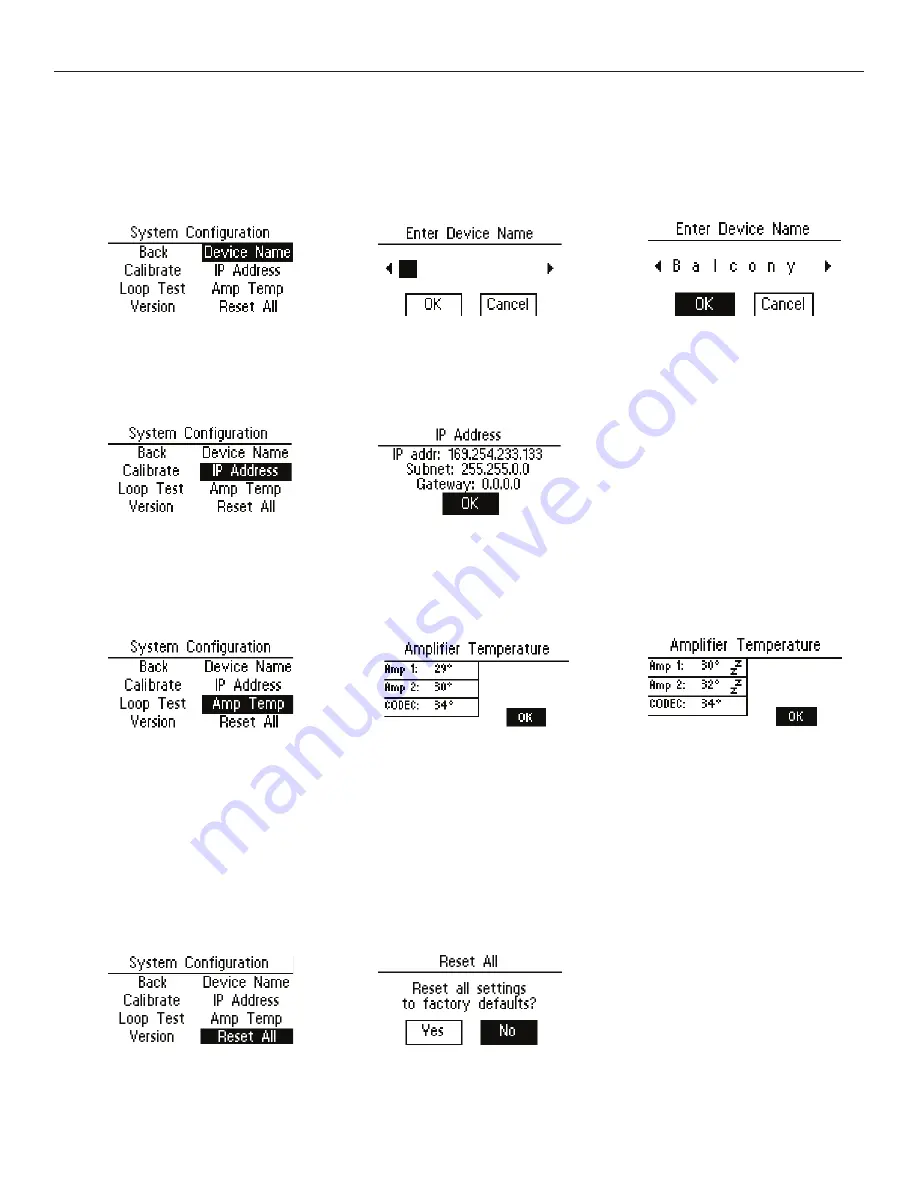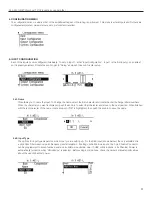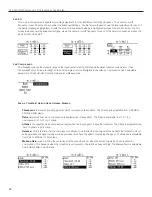
PLA DL210NET Digi-Loop™ DSP Induction Loop Amplifier
25
7g4. Device Name
The Device Name provides the ability to give the amplifier an 8-character name for easy identification when connecting to it
through the PC App on a network. This name will show up on a drop-down list in the PC App as an available device to connect
to. For example, if 5 amplifiers were connected on the network, and the third amp was designated for the balcony, you could
connect to “Balcony” to make changes to that amp’s settings.
7g5. IP Address
If Dynamic IP Addressing is being used (see 7c Network) the assigned IP Address can be viewed here.
7g6. Amp Temp
The temperature of the two amplifier output stages and the CODEC (audio processor chip) can be monitored here. A “zz” by the
temperature means that the amplifier is in sleep mode (see “7f. Power Save” for how to adjust when the amplifier goes to sleep).
7g7. Reset All
This resets all of the settings back to factory defaults. Any user-entered information will be lost. The amplifier may need to be
rebooted after the factory reset is performed to change states. For example, if the amplifier goes to sleep it may still be asleep
until it gets rebooted.
Note: The PC App gives the user the ability to save all settings to a configuration file for recall later. In this manner, all settings can
be erased (here) to bring the amplifier back to a known state (factory defaults) for troubleshooting purposes, etc. Then if desired,
a saved configuration can be loaded back into the unit via the PC App. It is good practice to store backup configurations in a
configuration file (see PC App section) if much work has been done to finely adjust the amplifier.


























